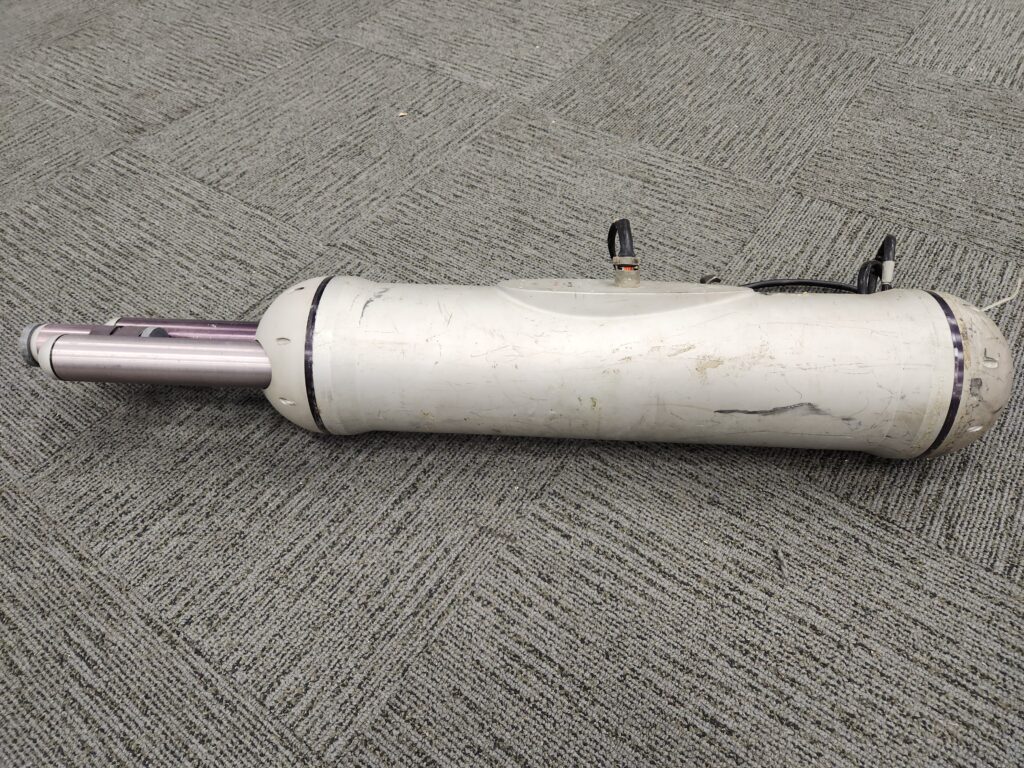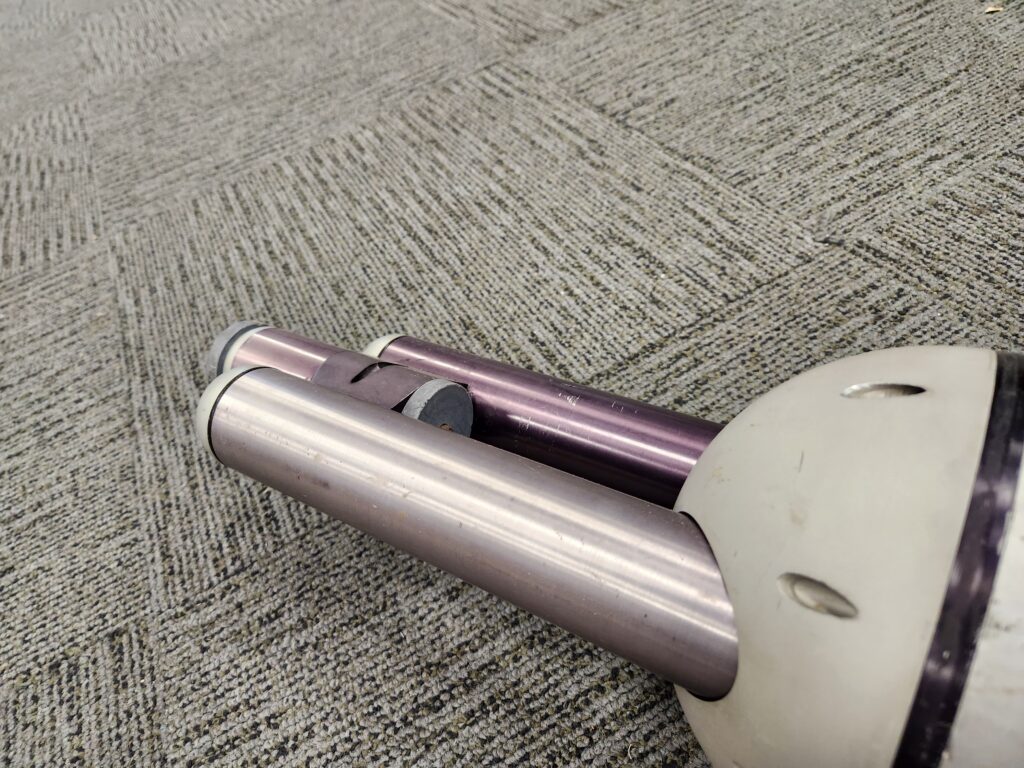The Forward Scattering Spectrometer Probe (FSSP) is a device that researchers can use to measure particles in the air. The device is typically mounted on research aircraft, including the T-28 Storm Penetrating Aircraft and the University of Wyoming’s King Air research aircraft.

The FSSP projects a laser, and as particles pass through, they distort and scatter the light. Some of the light is directed through a prism and then to the photodetectors to measure the particles. In addition to sizing a particle, the FSSP also allows researchers to record the concentration—how many particles are present—of the sample. Knowing the size and concentration of particles can help answer a variety of questions, including how clouds will reflect solar radiation, the effect of aerosols on cloud formation, and the climate stabilizing effects of clouds. For example, clouds that have many small particles will reflect more radiation than clouds with fewer large particles even if the same amount of water is present.
Due to the physical limitations of the device, researchers used algorithms to reduce the uncertainty that was often found in the raw data. Despite the need for data corrections, the decades of use is a testament to the reliability of the device.

Currently, it is difficult to predict the location that convective systems (commonly known as storms) will occur, so meteorologists must rely on models with higher uncertainty. The ability to understand how particle size and concentration varies between convective systems may make current forecasting models more precise, which could help people prepare for severe weather and flooding.
This FSSP featured in these pictures was flown on the University of Wyoming’s King Air from 1977 to 2014.
For more information on this device and other research tools, visit the National Weather Museum and Science Center in Norman, OK
By Riley Worley
References:
http://www.cas.manchester.ac.uk/resactivities/cloudphysics/background/

